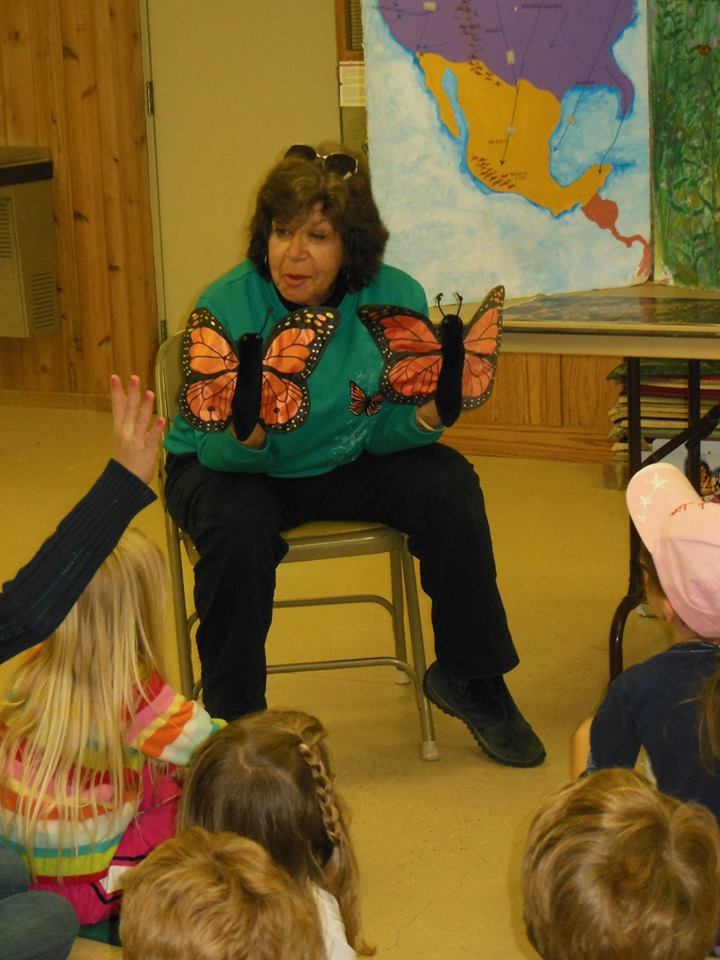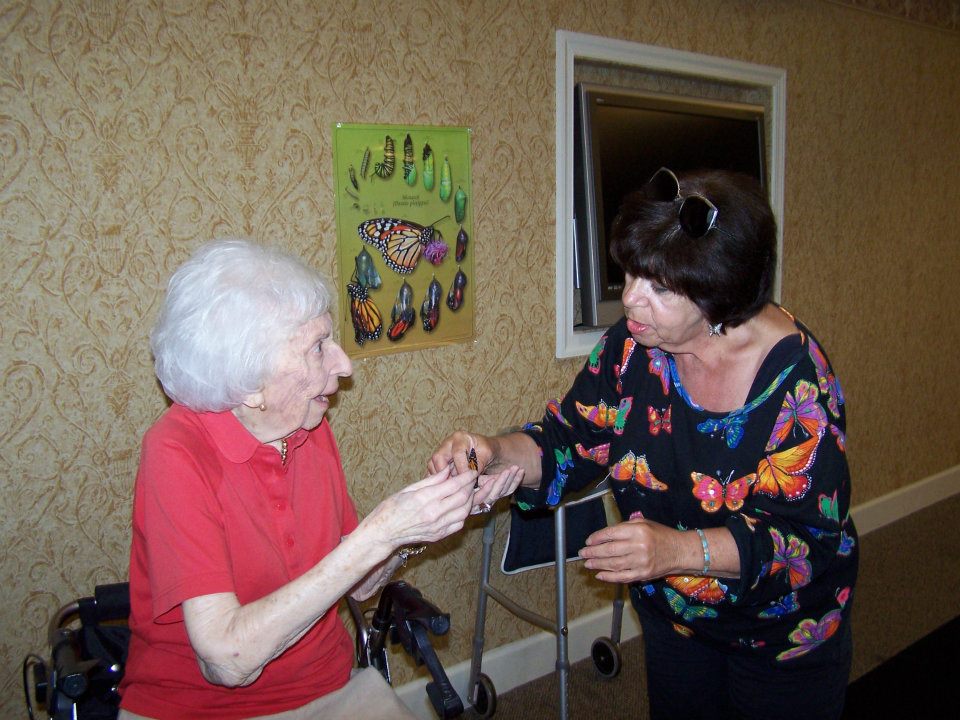During the third week of our 10-week research program with student researchers from Swarthmore, students interviewed experts and local community partners about what citizens could do to support pollinator habitat and populations in the city. This is an issue vital to POP, as nearly all of our fruit crops are dependent on insect allies like bees, butterflies, wasps, and moths for successful pollination and fruit production. For this reason, all POP orchards include pollinator gardens, often interplanted in the orchards’ understory.
Swarthmore student researcher Aaron Urquidez interviewed Judith Levicoff, author of ‘The Butterfly Garden’ and ‘Magical Migrating Monarchs’ book and curriculum guide, who’s been working for the past 30 years on educating her community about the importance of monarch butterflies. Last winter 2018, Judi was a featured presenter in PHS’ Green City Teachers program discussing her monarch curriculum, which involves understanding species and human immigration, ecology, hatching and tracking of monarchs, and more.
Green City Teachers supports teachers in starting school gardens and brings together teachers citywide to consider how school garden curriculum can be adapted for all ages through a variety of content integrations. For more information on the program, check out the PHS link above.

Judi Levicoff, otherwise known the Butterfly Lady, has been educating her community about the importance of monarch butterflies for the last 30 years. Her work started at the Philadelphia Zoo at the Tree House where she taught children through the use of simulated animals. Here, Judi helped foster a sense of empathy in children, showing the children what it is like for the animals to live in their environment.
As of recently, Judi has expanded her scope to retirement homes and community centers and has implemented the use of butterflies as a method to explain the social implications of planting gardens and migration. “The planting of gardens has been used as a substitute for therapy dogs and is better able to show the relationship between individuals and the environment,” she said. “The direct role in raising of the butterflies provides an understanding of interconnected care and need for a prolonged care through the generations.”

Migration of the monarch butterflies can be seen throughout the entire North American continent and has significant cultural ties for the residents near Mexico City. Around the Día de Muertos / Day of the Dead the butterflies return to the area and symbolize the souls of children returning as residents celebrate their deceased family members.
Judi has also spent significant time in California gaining a hands-on understanding of monarchs’ habitat needs and their unfortunate ongoing destruction. She said, “the vast amounts of pesticides and genetically modified crops are commercial destroying the milkweed while the residential perception of the “weeds” in general are contributing to the disappearance of the monarch habitat.” In addition to her work with the species directly, Judi also encourages the planting of milkweed species and planting other monarch-friendly plants like nectar rich plants like red clover, thistle, and alfalfa.
She shared, “Our current job as caretakers of the milkweed is to raise conversation and awareness about monarch butterflies and understand that gardens can be planted anywhere and anytime.”
This POP Blog Post prepared by 2019 Swarthmore student researcher Aaron Urquidez with support from POP Education Director Alyssa Schimmel.
SUPPORT US! If you found this entry useful, informative, or inspiring, please consider a donation of any size to help POP in planting and supporting community orchards in Philadelphia: phillyorchards.org/donate.